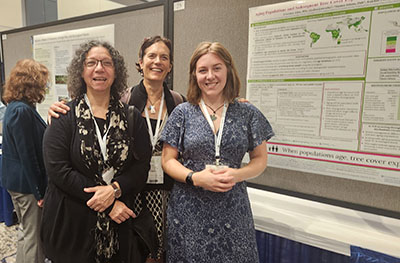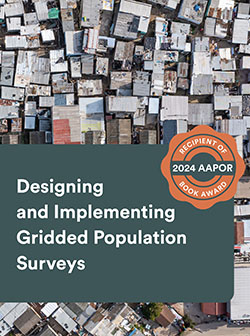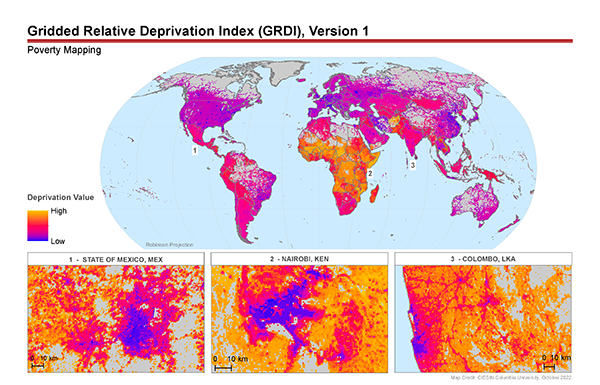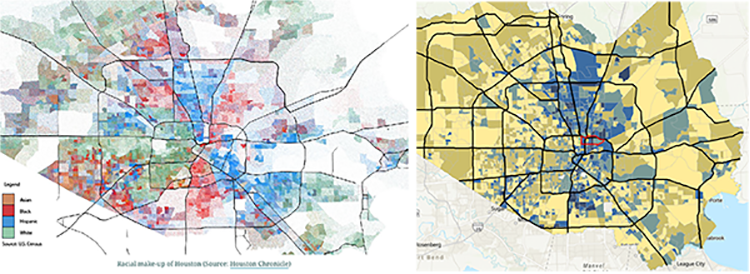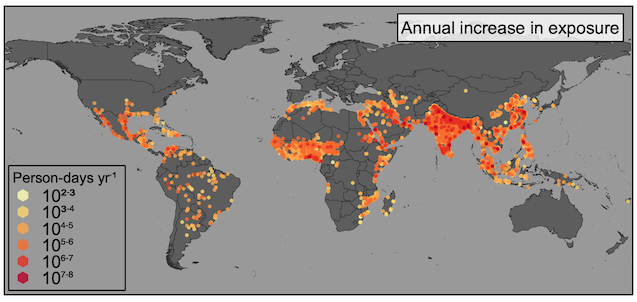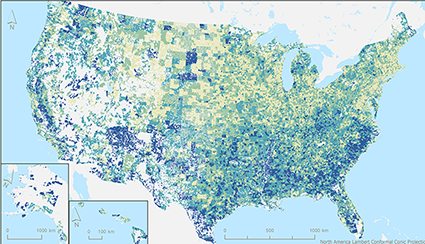The NASA Socioeconomic Data and Applications Center (SEDAC) operated by CIESIN has released several new data sets related to hazards, infant mortality, and future socioeconomic scenarios. The Geocoded Disasters (GDIS) Dataset is a geocoded extension of a selection of natural disasters from the Centre for Research on the Epidemiology of Disaster (CRED) Emergency Events Database (EM-DAT). The data set includes nearly 40,000 locations for almost 10,000 disasters worldwide for the 58-year period spanning 1960–2018. It encompasses all EM-DAT-recorded floods, storms, earthquakes, landslides, droughts, volcanic activity and extreme temperatures, some at administrative level 3 (district/commune/village) but most at 1 (typically state/province/region). GDIS facilitates geospatial analysis of past hazard events.
The Shared Socioeconomic Pathways (SSPs) Literature Database consists of biographic information, abstracts, and analysis of 1,360 articles published 2014–2019 that make substantial use of the SSPs. The database was developed by Carole Green et al. as the basis for a recent article in Nature Climate Change that analyzes use of the Climate Change Scenario Framework and associated scenario data sets in diverse application areas and in assessments of the Intergovernmental Panel on Climate Change (IPCC). The International Committee on New Integrated Climate Change Assessment Scenarios (ICONICS) is planning to extend the literature database. SEDAC User Working Group member Brian O'Neill of the Joint Climate Change Research Institute and CIESIN director Robert Chen are members of ICONICS.
Global Subnational Infant Mortality Rates (IMR), Version 2.01, provides more recent and higher-resolution infant mortality data, including estimates of births and infant deaths. The estimates are for 234 countries and territories, 143 of which include subnational units and are benchmarked to the year 2015 (versus year 2000 for the first version). IMR data are drawn from national offices, Demographic and Health Surveys (DHS), Multiple Indicator Cluster Surveys (MICS), and other sources covering 2006–2014. The birth and infant death data can be aggregated or disaggregated to calculate IMRs at different scales or resolutions. Boundary inputs are derived primarily from the Gridded Population of the World, Version 4 (GPWv4) data collection. National and subnational data are mapped at a spatial resolution of 30 arc-seconds (~1 km at the equator), facilitating integration with demographic, environmental, and other spatial data. Data set development was led by senior geographic information specialist Dara Mendeloff and research scientist Susana Adamo.
The data set, Georeferenced U.S. County-Level Population Projections, Total and by Sex, Race and Age, Based on the SSPs, 2020–2100, contains county-level population projection scenarios of total population, and by age, sex, and race in five-year intervals for all US counties 2020–2100. These data can serve as inputs for addressing questions involving sub-national demographic change in the United States in the near, middle- and long-term.
